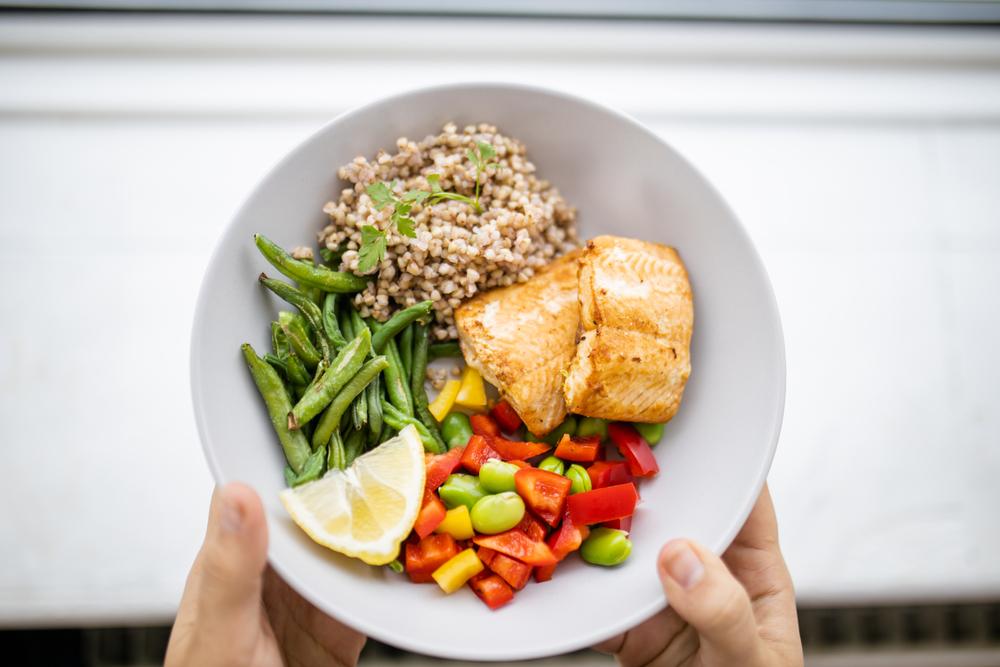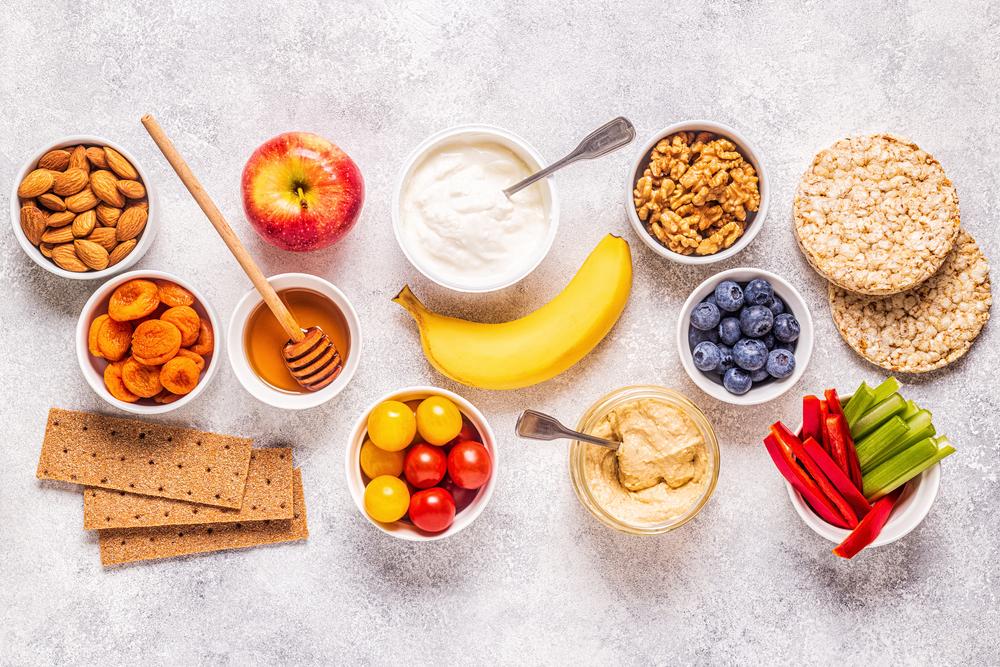A tough question of quantity
Some prefer to eat smaller portions frequently, whereas some go for larger portions but fewer meals. Either way, we all end up with full stomachs. Scientifically, which is better? What’s better, a set meal or à la carte?
We spoke to Rozanna M. Rosly, Clinical Dietitian with Avisena Women’s and Children’s Specialist Hospital to understand the advantages and disadvantages of both options.

What does a ‘big eater’ mean?
Ms Rozanna M. Rosly: A big eater means someone who eats a lot. It can also mean someone who eats all the food on their plate or what is offered.
This term is very individualised and subjective to other factors. Some of the factors include the size of the plate, the portion of the food and the time taken to eat the food. The age, gender and environment the person was in (alone or in a group) also matter.
Additionally, there is the financial budget, appetite, snacking habits, work shifts and so on, that should be taken into account.
Does ‘small eater’ simply refer to a picky eater?
Ms Rozanna: A 2015 review of studies from the 1990s found that choosy eating habits among kids were linked to several factors. These include personality traits, parental control at mealtime, social influences and more.
It’s pivotal that children have a healthy relationship with food. Whether your child is small or big in size, trust that he or she is eating the right amount. Interfering with a child’s eating habits can cause nervousness around food. Children would get turned off by food and tend to eat less when they get the chance.

You can try giving your child frequent meals and snacks throughout the day to keep his or her energy levels up. For young children, you can feed them according to their appetite and nutritional needs.
Similar to the Ministry of Health’s Healthy Plate model, which emphasises the Suku Suku Separuh (or Quarter Quarter Half concept), your child’s plate should look like this:
>> Half filled with fruits and vegetables.
>> A quarter filled with whole grains and carbohydrates.
>> Another quarter filled with proteins.

Remember to also:
>> Choose water.
>> Be active.
>> Ensure adequate sleep.
>> Provide adequate calcium and vitamin D.
Is the concept of ‘Quarter Quarter Half’ (QQH) applicable to big eaters and small eaters?
Ms Rozanna: The Healthy Plate concept serves as a motivation rather than a prescriptive tool to build balanced meals. Instead of defining a certain number of calories or servings per day from each food group, a Healthy Plate emphasises the quality of the diet at each meal.
Anyone can follow the important principles of a Healthy Plate and customise them according to their lifestyle, gender, age, physical activity, medical conditions and eating patterns.
There’s a common belief that some small size people have a ‘high metabolism’ What are your thoughts on this?
Ms Rozanna: Meal frequency does not affect metabolic rate and thus has no direct effect on weight loss.
One argument for eating several small meals throughout the day is that it keeps your metabolism revved. Your body uses energy to digest food, so the theory is that the more frequently you eat, the more calories your body is burning.

What are the advantages of eating small frequent meals?
Ms Rozanna: Those who advocate for eating small, frequent meals suggest that
this eating pattern can:
>> Improve satiety, or feeling full after a meal.
>> Increase metabolism and body composition.
>> Prevent dips in energy.
>> Stabilise blood sugar levels.
>> Prevent overeating.
While a few studies support these recommendations, others show no significant benefit.

Who should consume small frequent meals?
Ms Rozanna: The optimal timing of eating may depend on various factors unique to each individual.
Regardless, what is most important is the quality of food you eat, the proportion of nutrients you eat and understanding your behaviour and lifestyle. Do you binge if you go into dinner hungry?
If you find yourself so hungry by dinner time that you are eating an entire pack of keropok (chips) or tearing into a package of biscuits or chocolates, then more frequent smaller meals might be a better fit to prevent poor food choices and overindulging.

On the other hand, more eating occasions for others might just turn into more opportunities to overeat or rely on less nutritious convenience foods. If your smaller meals are not actually small or consist of processed or fast food, then you might want to stick to three meals a day.
So, people who experience early satiety, are trying to gain weight, have gastroparesis and have gastrointestinal symptoms such as nausea, vomiting, or bloating should consume small, frequent meals.
Either way, make sure to fuel up on whole foods including those that have high-quality protein, healthy fats, less added sugar and salt, fresh fruits and vegetables and high-fiber carbohydrates.
Who should consume fewer meals with larger portions?
Ms Rozanna: Experts say that eating more frequently may be problematic for those who have trouble with portion control, known as stimulus-bound eating. This is when the sight of a specific food prompts you to eat it, which can lead to weight gain.
An “all-or-nothing person” may be better off with three meals per day, if a small snack quickly turns into a bigger one, as in the case of nuts or chips. Nuts can be a healthy snack option, but when you are unable to stop once you start eating nuts, that can be a problem.
The environment plays a role, too. If your office has a kitchen full of free snacks, it is a lot easier to go in and grab something instead of planning your own healthy meals and bringing them in. Working from home, with constant access to the kitchen, can present similar challenges.
Then there are others who just do not want to be bothered with making eating an all-day affair. Some just want to eat and get it done with, so they do not do well with small snacks. They are really busy, and they just do not have the time to deal with it, so those people may be better off with three meals per day.
So, people who may benefit from three larger meals per day include those who have difficulty practising portion control, those who tend not to eat mindfully, and those who may not have time to plan and prepare several nutritious mini-meals a day.
The bottom line is that either style of eating can offer health and weight-loss benefits. But what matters most is what will work for you.

How can one snack healthily in between meals?
Ms Rozanna: It is widely accepted in modern culture that people should divide their daily diet into three large meals — breakfast, lunch, and dinner — for optimal health.
In recent years, however, experts have begun to change their perspective, suggesting that eating smaller, more frequent meals may be best for preventing chronic disease and weight loss.
So yes, it’s better to snack in between meals – healthily. Here are some options:
>> Low-fat yoghurt.
>> Corn or rice cakes
>> Dried fruit or nuts.
>> Fresh vegetable.
>> A slice of brown bread.

What’s better: Set meal or à la carte?
Ms Rozanna: Ordering à la carte, means ordering ‘according to the menu’; however, this means that you will be able to pick and choose exactly what you want from that menu rather than having it chosen for you as part of the restaurant’s fixed set meal menu.
Going à la carte means that you can make every decision for yourself and it can be a good choice for selecting more variety and balanced choices.
Most importantly, you will have greater scope to experiment with what you are eating. You will be able to choose dishes from a large selection, and then decide which sides, garnishes, and drinks would best complement them.
Is one better than the other? Based on numerous studies, no substantial evidence supports one eating pattern over the other. Yet many of these studies also have limitations.
For example, there is no universally accepted definition of what a meal or snack consists of. This can have an impact on study outcomes. With that said, both eating patterns can be beneficial as long as the primary focus is on healthy eating habits.














